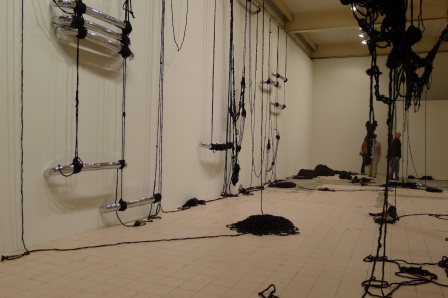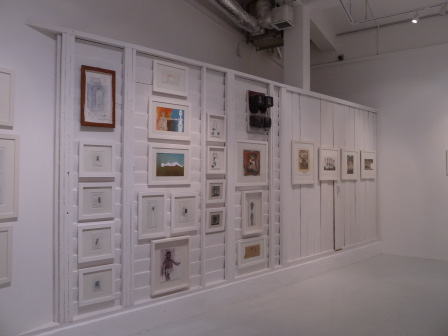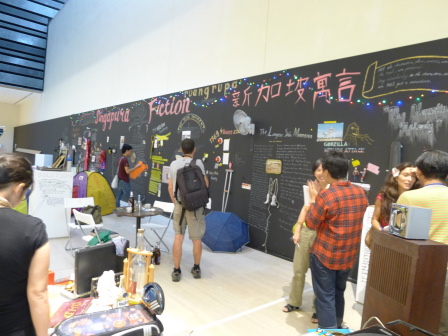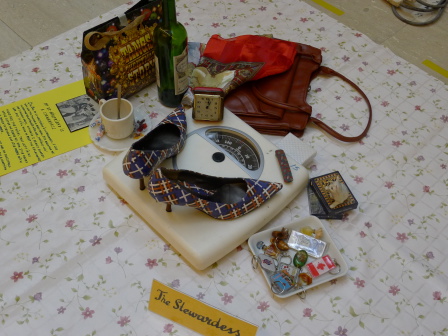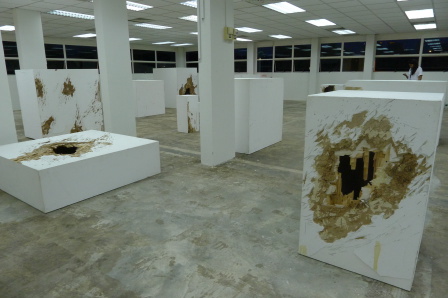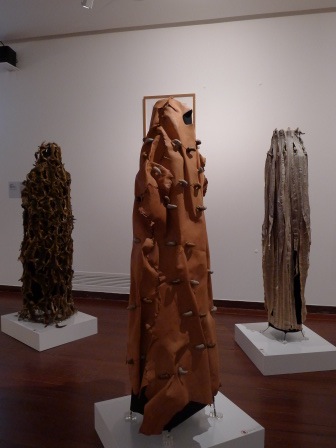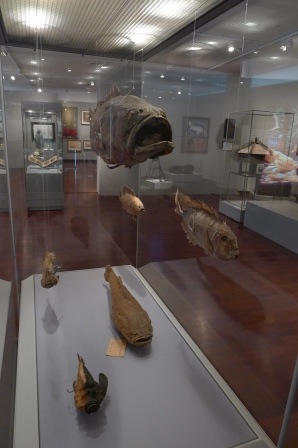The Singaporeans have certainly been laying the art on. Just two months on from Art Stage, we tramped down for the year’s second art blockbuster event, the slightly delayed Singapore Biennale, and a good seven or eight shows on the side.
By all accounts, SB2011 is less of a spectacle than its predecessors – no art statements running across City Hall in bright lights, no colourful containers brightening the urban shoreline. It shies well away from big beautiful themes like 2006’s Belief, and 2008’s Wonder. This year’s Biennale, themed “Open House”, is decidedly interior in its conceptual and physical architecture.
(Broadsheet’s 40th anniversary edition gives a good preview, including a lengthy interview with Artistic Director Matthew Ngui and Curators Russell Storer and Trevor Smith: http://www.cacsa.org.au.)
Less can be more, though, and, not expecting wow (there was simply not very much build-up to the event), I really enjoyed the Biennale as an experience. I found myself getting into works I didn’t expect to like, and that there was just about enough time to cover the 63 works over a day and a bit (ideally two though) without reeling over from too much information. The curatorial emphasis on process over subject, object and in a number of cases, presentation, I think worked on me, ranging through sometimes vastly different approaches from space to space, room to room, dark corner to dark corner (of the National Museum) – the question marks and surprises, as much as the resonances did force you to engage and explore. I particularly liked the Old Kallang Airport site – moving through the succession of rooms in the East and West blocks like changing levels of a video game, or the hide-and-seek of the main building. There was an Alice-in-Wonderland effect, you were tiny among the giant rolls of Michael Beutler’s Pipeline Field, or in Sheela Gowda’s magnified bathroom of horror, but god-like peering into the unrealised utopias of Michael Lee’s Office Architect. Rafael Lozano-Hemmer’s Frequency and Volume: Relational Architecture 9 was a big hit with visitors as our bodies tuned into radio channels tracking the large shadows we cast on the wall.
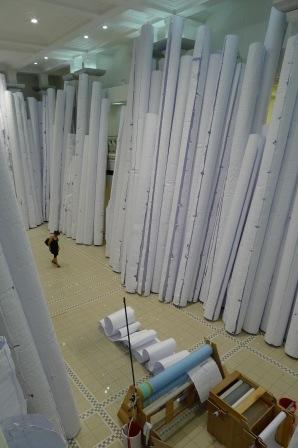 Michael Beutler, Pipeline Field
Michael Beutler, Pipeline Field
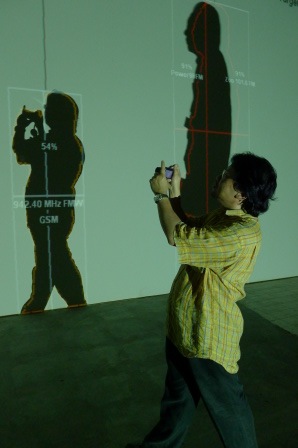 Rafael Lozano-Hemmer, Frequency and Volume: Relational Architecture 9
Rafael Lozano-Hemmer, Frequency and Volume: Relational Architecture 9
There was a definite sense of nakedness and exposure, sometimes as a challenge, sometimes as an act of trust or intimacy, sometimes conspiratorial. There were relatively few works that were all dressed up and ready to go for the ball. For Rumah Sulaiman Belakang Kedai Ah Guat, Shooshie Sulaiman relocated the structures of two sites of personal significance– in Titiwangsa KL and Malacca, to SAM’s 8Q building, and they contextualise a video of a conversation with Ah Guat, and drawings and collages from over the span of her practice, creating a layered reading of artistic process, space, and memory through an excavation of the personal.
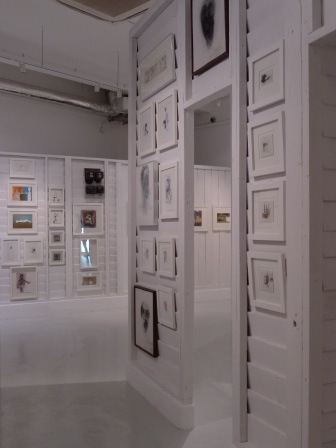 Shooshie Sulaiman, Rumah Sulaiman Belakang Kedai Ah Guat
Shooshie Sulaiman, Rumah Sulaiman Belakang Kedai Ah Guat
Confession, identity-construction and voyeurism seemed to play a big part in the curatorial conversation, from Ruang Rupa’s hilarious and touching fantasy lives of Singaporeans to Ise’s grocery-shopping adventures with local families to Jill Magid’s Evidence Locker to the poster-child of the Biennale, Candice Breitz’s Factum which compares interviews with identical twins and a set of triplets. I particularly enjoyed Tala Mandani’s tiny animated vignettes of clumsy men doing violence to themselves, and Simon Fujiwara’s extraordinary manifold reconstruction of Hotel Mumber using eroticism as an intriguing entry-point.
I was surprised by the amount of sex (as parody: Tracy Moffat, Ming Wong) and violence (to inanimate structures – Lisi Raskin’s muscled reconfiguration of the mezzanine floor of Kallang West Block, Mike Nelson tearing up walls and pedestals, Superflex drowning McDonalds). I found I quite liked the violence bit.
Other personal favourites which linger in my mind are Tiffany Chung’s poetic landscape installation Floating into the Future from a Distant Past, and earlier mappings of Vietnam, and Phil Collins’ wonderful music video The Meaning of Style, carving new spaces for imagining our third-world realities.
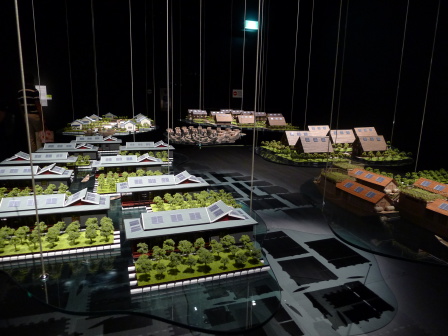 Tiffany Chung, Floating into the Future from a Distant Past
Tiffany Chung, Floating into the Future from a Distant Past
It’s worth catching the Biennale (to 15 May 2011) if you’re in this part of the world – not so much as a great new album of contemporary art, but certainly an inspiring and interesting playlist which can help to make us think more deeply about what some artists today are trying to get at.
For a “greatest hits” of Southeast Asian contemporary art, you can also catch Negotiating Home, History and Nation: Two Decades of Contemporary Art from Southeast Asia, 1991 – 2010 at SAM (to 26 June 2011). Do also make an effort to visit Camping and Tramping Through the Colonial Archive: The Museum in Malaya at NUS Museum, a wonderful exploration, both as an exhibition and a publication, or what curator Shabbir Hussain Mustafa describes as an “exhibitionary complex”, of the evolution of the museum in Malaya. Tap into some fantastic archival material including letters and recorded conversations on Malayan exhibitions in London in the 1920s, the genesis of the Raffles Museum, and the Asian Art Museum at University Malaya and their collections, Asian art objects from the NUS Museum and Asian Civilisations Museum collections, natural history artefacts from the Raffles Museum of Biodiversity Research (NUS) Collection, Dr Ivan Polunin’s remarkable Singapore film archive and the eclectic collection and paintings of artist and healer Mohammad din Mohammad, for new ways of seeing old ways of seeing.
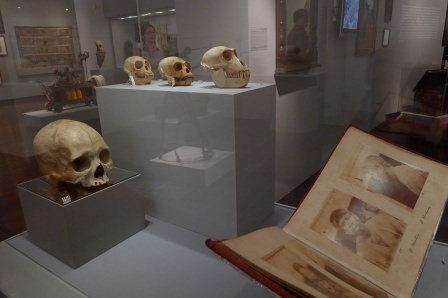 Camping and Tramping Through the Colonial Archive: The Museum in Malaya
Camping and Tramping Through the Colonial Archive: The Museum in Malaya
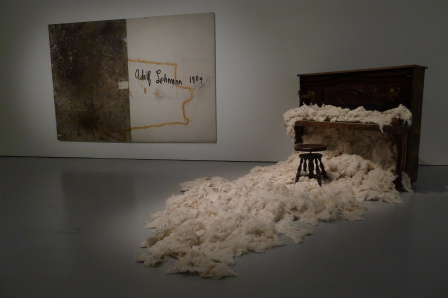 Bernando Pacquing, Untitled at ICA’s “Roberto Chabet : Complete & Unabridged”
Bernando Pacquing, Untitled at ICA’s “Roberto Chabet : Complete & Unabridged”
Tags: Candice Breitz, Ise, Jill Magid, Kallang Airport, Lisi Raskin, Mella Jaarsma, Michael Beutler, Michael Lee, Mike Nelson, ming wong, NUS, Open House, Rafael Lozano-Hemmer, Ruang Rupa, Sheela Gowda, Shooshie Sulaiman, Simon Fujiwara, Singapore Biennale, Superflex, Tala Mandani, Tiffany Chung, Tracy Moffat

